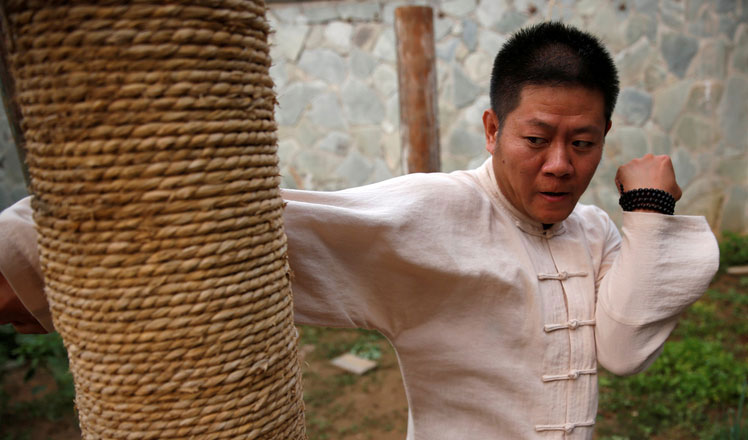Walking the path to restoration
Updated: 2016-11-02 07:29
By Francois Dubé(China Daily)
|
||||||||
Delicate balance
According to a county official, protecting cultural relics while using them to develop the tourism industry is inherently contradictory, and striking a balance has proven difficult.
The positive side is that tourism can raise awareness of the need to protect cultural heritage and generate income for restoring and better protecting local relics. However, the exploitation of cultural relics will inevitably lead to their destruction.
Before the start of restoration work on the wooden pagoda, several complaints were made by pilgrims and media regarding the administration of the pagoda and local protection efforts.
Until 2010, the use of candles was allowed inside the pagoda, which exposed it to the risk of fire and was very much contrary to the philosophy of local heritage protection.
The fact that the pagoda itself was used for various commercial activities was also considered inappropriate in view of the fact that pilgrims consider it a sacred place.
Currently, decisions related to repair and restoration work, access to the pagoda and the financing of restoration work are made entirely at the national level by the State Administration of Cultural Heritage, which has resolved some of the previous administrative problems.
There is little question that in the absence of adequate and timely restoration programs, cultural relics such as the pagoda will inevitably deteriorate, making it impossible to either develop the local tourism industry or undertake heritage conservation.
"When I was young, I could have gone up to the very top of the wooden pagoda, but I didn't. Now I can't go up, because the top floors are closed," says local tour guide Wang. "What a pity."
The author, from Canada, is a Beijing-based journalist. He is a member of "Shanxi in the eyes of international friends."
- Regular China-South Asia freight train launched
- Police swoop on Paris migrant camp after Calais Jungle clearout
- Regular China-South Asia freight train launched
- South Korean prosecutors arrest woman at centre of political crisis: media
- EU, Canada sign landmark deals to enhance economic, political partnership
- Wife raises funds to search for missing sailor

 Obamas host White House Halloween for children
Obamas host White House Halloween for children
 China Fashion Week: Liu Yong Exclusive
China Fashion Week: Liu Yong Exclusive
 Top 5 collaborating countries in Belt and Road Initiatives
Top 5 collaborating countries in Belt and Road Initiatives
 Hand-carved buckets face possible extinction in Zhejiang
Hand-carved buckets face possible extinction in Zhejiang
 Jet fighters and bombers ready for Air Show China
Jet fighters and bombers ready for Air Show China
 The World in photos: from Oct 24 to Oct 30
The World in photos: from Oct 24 to Oct 30
 Through the lens: The life of a kung fu master
Through the lens: The life of a kung fu master
 In pics: Top 10 Chinese cities in 2016
In pics: Top 10 Chinese cities in 2016
Most Viewed
Editor's Picks

|

|

|

|

|

|
Today's Top News
US election rhetoric unlikely to foreshadow future US-China relations
'Zero Hunger Run' held in Rome
Trump outlines anti-terror plan, proposing extreme vetting for immigrants
Phelps puts spotlight on cupping
US launches airstrikes against IS targets in Libya's Sirte
Ministry slams US-Korean THAAD deployment
Two police officers shot at protest in Dallas
Abe's blame game reveals his policies failing to get results
US Weekly

|

|







